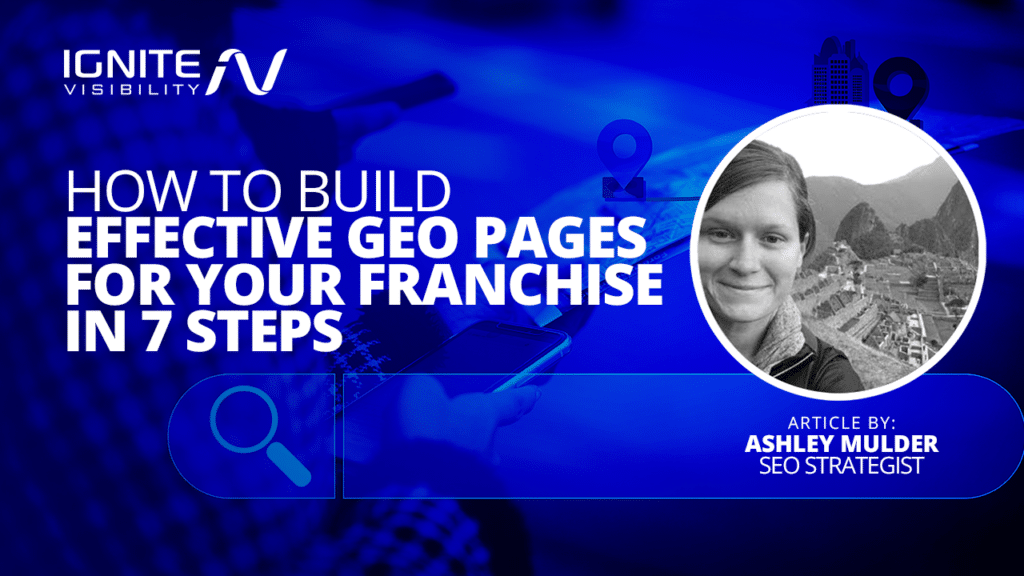
When it comes to local SEO, multiple-location businesses have to do things a bit differently.
That’s where geo pages, also known as franchise landing pages, come in.
What You’ll Learn:
- What is a Geo Page?
- Benefits of Creating a Geo Page
- 7 Elements to Include In Effective Geo Pages for Your Franchise
- When Are the Best Times to Create Geo Pages?
- 3 Examples of Effective Geo Pages for a Franchise
What Is A Geo Page?
Geo pages, also known as geo targeted landing pages, are individual landing pages customized to each of your individual locations. They provide information specific to that location, such as contact information, address, local landmarks, and more.
For example, if you own a BBQ restaurant with locations in San Diego, Carlsbad, and Riverside but only have one general website, you might capture the search results from “BBQ in California” but not necessarily from all the searches specific to your individualized cities.
With the help of geo pages, each of your locations would have its landing page. So, when users search “BBQ San Diego” or “BBQ near me” from Riverside, your restaurant would have more of a chance of popping up than if you only had that one general website.
Franchise landing pages are especially important if you run a small franchise that is part of a larger chain company. For example, if you owned a Carl’s Jr. franchise, developing a franchise landing page would help you capture those “near me” searches better than the general company website.
Our Expert Insights on Franchise Landing Pages
As our SEO Strategist, Ashley Mulder, says, “Some people underestimate the value geo pages can bring to a multi-location business. But creating and optimizing these pages is one of the best things you can do to boost your local search ability, enhance your user experience, and increase engagement. It’s the perfect way to capture the attention of your preferred audience and drive that traffic to your website.”
The past few years have been record years for new small businesses. That’s more companies competing for the attention of the audience you need. Creating geo pages, or franchise landing pages, can give you a leg up on the competition and cement your business as the go-to in your local market.
Action Item: If you haven’t already, lay the groundwork for your geo pages. Gather information that is important for each location, such as the physical location, details about your location that visitors should know, content information, and quality interior and exterior photos. The more customized you make each page to its specific location, the better.
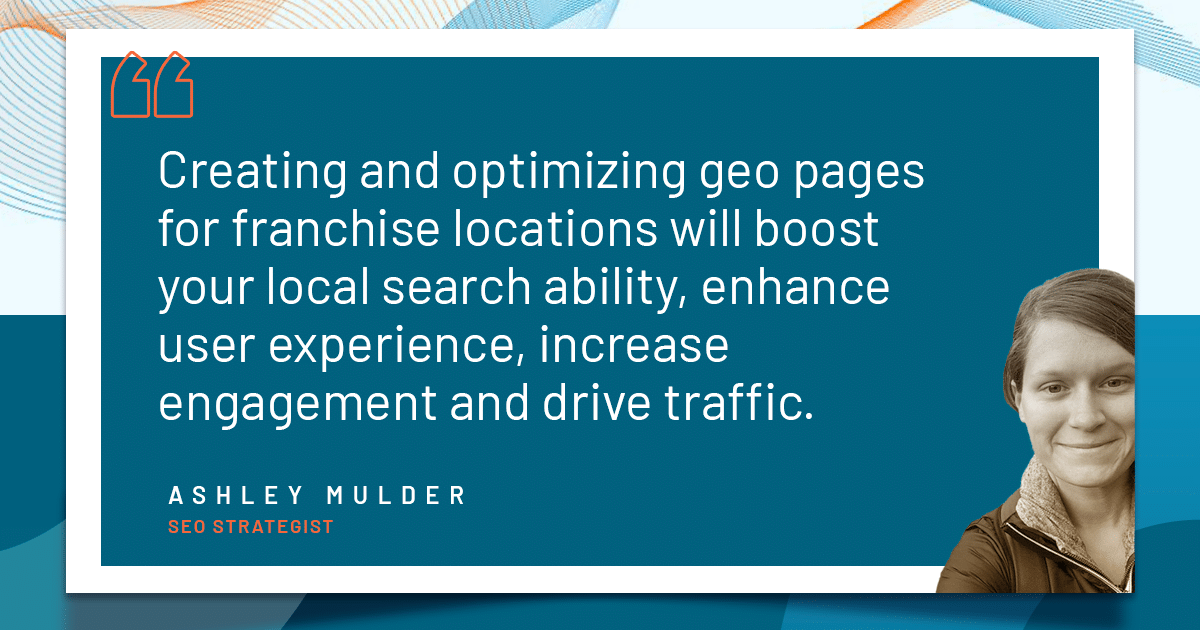
Ashley Mulder – Geo Pages for Franchises
Benefits of Creating Geo Pages
The benefits are plentiful for geo targeted landing pages. When they are created and optimized correctly, they can lead to improved local search visibility, enhanced user experience, and increased customer engagement.
When users can see customized information about each specific location, including hours of operation, photos of the interior and exterior of the building, specials, promotions, and reviews of each location, it encourages users to engage with your business. The more your audience engages with your business, the stronger their brand loyalty will be.
Providing the most up-to-date and location-specific information also benefits your audience because they will never be left in the dark about anything. They might even see a post or picture that inspires them to visit the location closest to them.
7 Elements to Include In Effective Geo Pages for Your Franchise
Creating an effective franchise marketing strategy begins with your landing pages. Here are the top 7 things that you should include in your geo page.
1. Title Tag
When creating your title tag, be sure to include the service or product and the location of your business. For example, if we were writing a title tag for the BBQ restaurant, we would write something like “BBQ Restaurant in San Diego, California.”
2. Headers
If you’ve worked in digital marketing long enough, you probably know the importance of your H1 header. A franchise landing page is no different. Make sure that your H1 is very similar to your title tag. Continuing our example from above, we could use, “Best BBQ Restaurant in San Diego, California.”
3. Add Location-Specific Content
The next step to a fantastic geo page is to get specific! Don’t have the same general content on every page. That’s the best way to get dinged by Google for duplicate content. Instead, craft copy that provides accurate information that is relevant to each specific location. Include things like your location’s address but also local landmarks, cities, and other location-specific information.

List local landmarks as part of your franchise SEO strategy
4. Add Location-Specific Images
Besides customized content, you’ll want to include customized images. Geo pages thrive when localized images are used. Use photos from your specific location, and don’t forget to make the alt tags location-specific, too.
5. Google Maps – Physical Location
If you haven’t updated your physical location in Google Maps, consider this a sign to do so now! We don’t necessarily mean you have to embed Google Maps into your geo targeted landing pages, but at least make sure that your contact information is exactly the same on both the map and your geo page.
6. Add Fresh Content
Geo pages aren’t a set-it-and-forget-it type thing. You’ll need to add fresh content periodically to keep yourself at the top of the SERP. One strategy to try is repurposing content you’ve posted elsewhere. Think of things like images, customer reviews, specials, and other location-specific information.
7. Interlinking
Don’t be afraid to interlink your geo pages. Thinking back to the BBQ restaurant example from above, if you have restaurants in San Diego, Carlsbad, and Riverside, make sure that you link all of them on each of your individual franchise landing pages. This will interlink your pages together and give you even more of a chance of showing up for those coveted “BBQ restaurant near me” searches.
When Are the Best Times to Create Geo Pages?
Just like any other part of your digital marketing strategies, certain times of the day are better than others to create your new geo pages. Here are some of the best times to think about creating or updating your franchise landing pages.
During a Franchise Launch
One of the best times to create a geo page is when you’re able to launch a new franchise location. Tailor this page to the specific location, sharing important location-specific information such as hours, address, phone number, etc.
Prior to Expanding to New Locations
If your franchise is in a growth phase and planning to open new locations, give yourself enough time to create a geo page for each location. Starting well in advance will allow time for SEO optimization and ensure that each page is ready to go as soon as the new location opens its doors.
Seasonal or Local Events
Geo pages can also be created ahead of local events, holidays, or seasonal promotions. This will prime your audience and ensure that your franchise is well-prepared to target them during these special events.
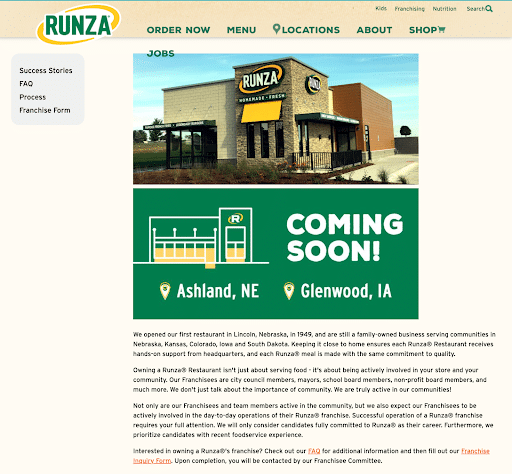
A geo page was created before expanding to new locations
When Targeting Specific Demographics
If your franchise wants to target specific demographics in different locations, consider creating geo pages as part of your marketing strategy. Tailor the content and messaging to each specific demographic.
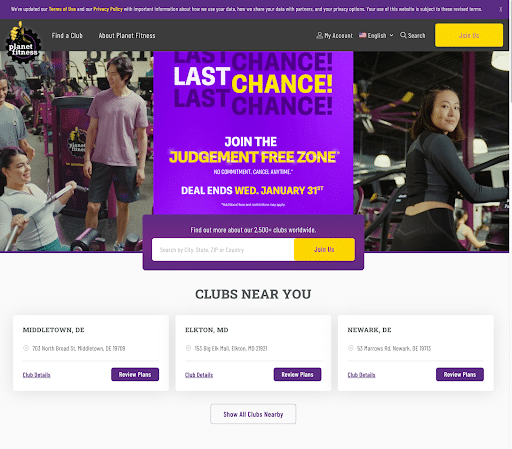
Example of a seasonal event geo page
As Part of an Ongoing Marketing Strategy
Geo pages are not a one-time effort. They are part of your regular marketing strategy. Just as you would make time to update your social media or general website content, you should regularly update and optimize your franchise landing pages.
When Expanding Online Presence
If your franchise is looking to enhance its online presence or local search visibility, geo targeted landing pages can play a significant role. Make sure they’re a part of your digital expansion strategy.
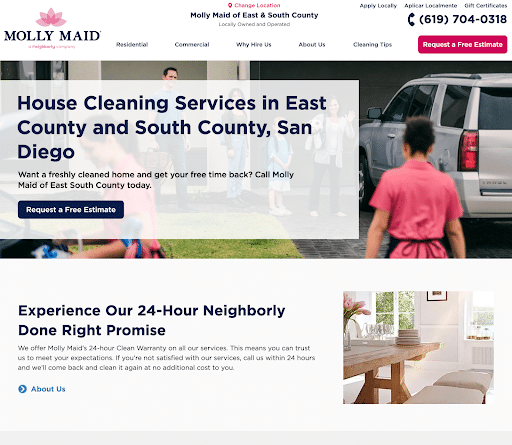
An example of a geo page used to expand online presence in a specific area
When You Have Unique Local Content
If you have valuable and unique local content to offer, such as local stories, customer testimonials, or partnerships with local businesses, create geo pages to showcase this content.
When Conducting Local SEO Audits
Periodically conduct local SEO audits to identify areas for improvement. If you find gaps in your local SEO strategy, create geo pages to address those gaps and enhance your local search rankings.
In Response to Competitor Action
If your competitors are actively targeting specific local markets, consider creating geo pages to maintain a competitive advantage. Not doing this is the same as handing over your audience directly to your competitors.
3 Examples of Effective Geo Pages for a Franchise
1. Mr. Handyman
Although a national company, this page targets Woodstown, Swedesboro, and Sewell, all New Jersey areas, specifically with localized information, a local phone number, and more.
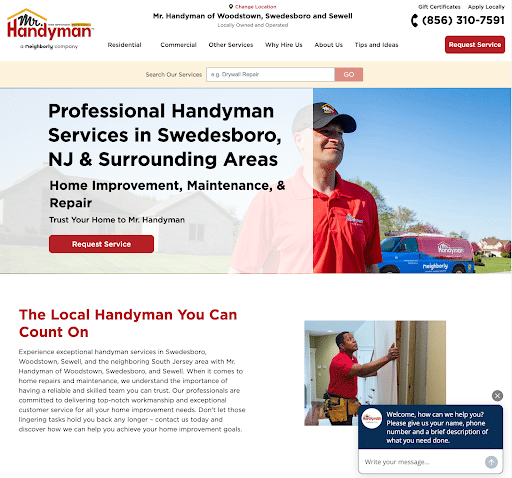
Example of a franchise landing page
2. Auto Zone
This franchise landing page is for an Auto Zone in Middletown, Delaware. Like the Mr. Handyman example, it gives information about the national chain but also location-specific information such as the hours of operation, local phone number, map, and special services offered at this location.
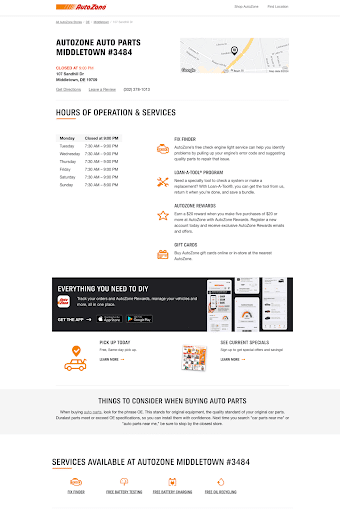
Example of a franchise landing page
3. Long & Foster
Long & Foster isn’t taking any chances on losing business! Not only do they have a geo page for the overall Washington, D.C. area, but they also have individual franchise landing pages for each of their six locations within the DC metro area.
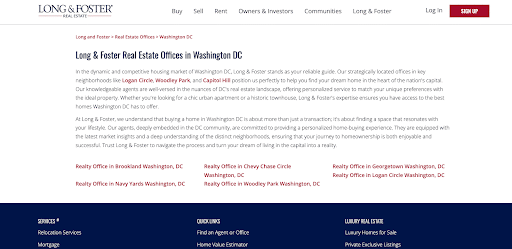
Example of a franchise landing page based on large city
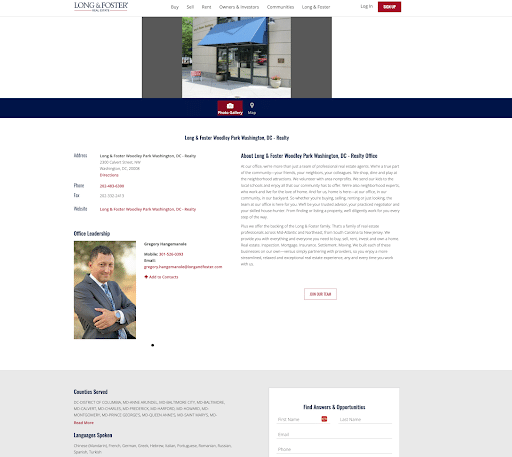
Another example of a geo page for individualized location
Both pages provide localized information such as the office location, counties served, maps, hours of operation, and contact information. The individual office pages also showcase Featured Listings in each local area and agents that work out of that office.
Get More Attention With Your Geo Pages With Ignite Visibility
Whether you’re looking to increase your local SERP ranking, enhance user experience, or encourage more engagement, Ignite Visibility can make it happen.
We have created geo pages for businesses all over the country in almost every industry, including construction, home remodeling and repair, dental, medical, real estate, and more.
Ignite Visibility can help you:
- Build out franchise landing pages
- Optimize your conversion rates
- Create a cohesive local SEO strategy for your website
- And more!
Are you ready to see why so many of our clients are top-ranked within their service area? Reach out today!
